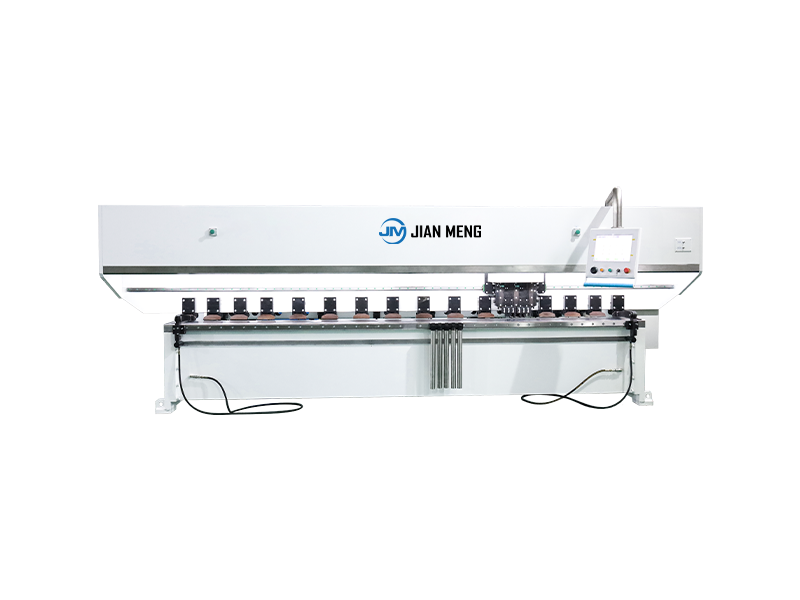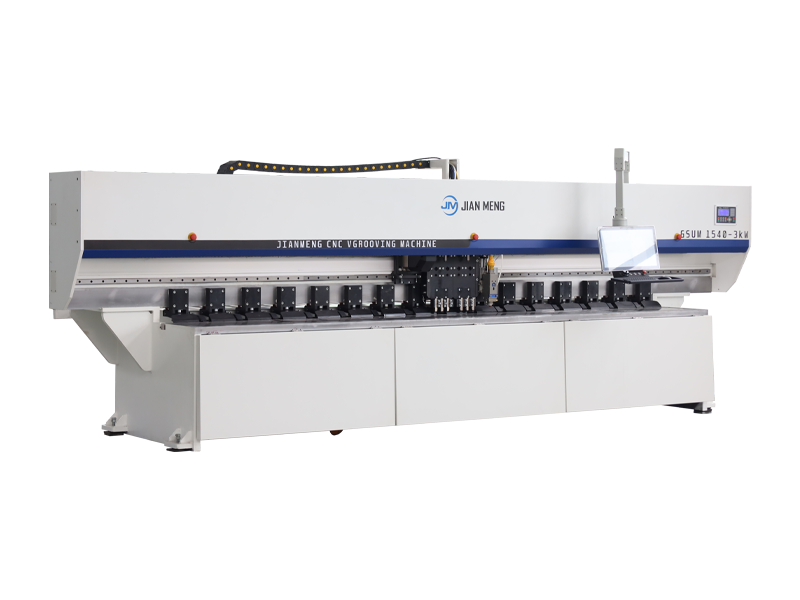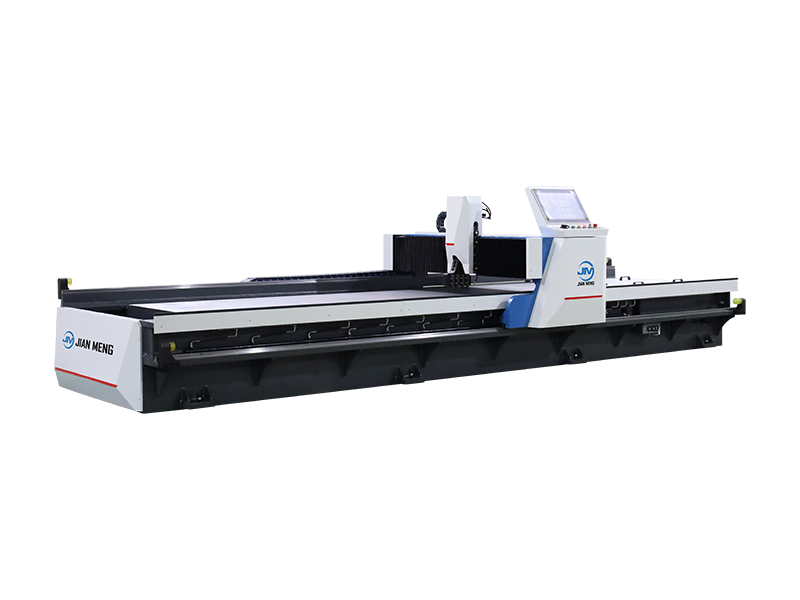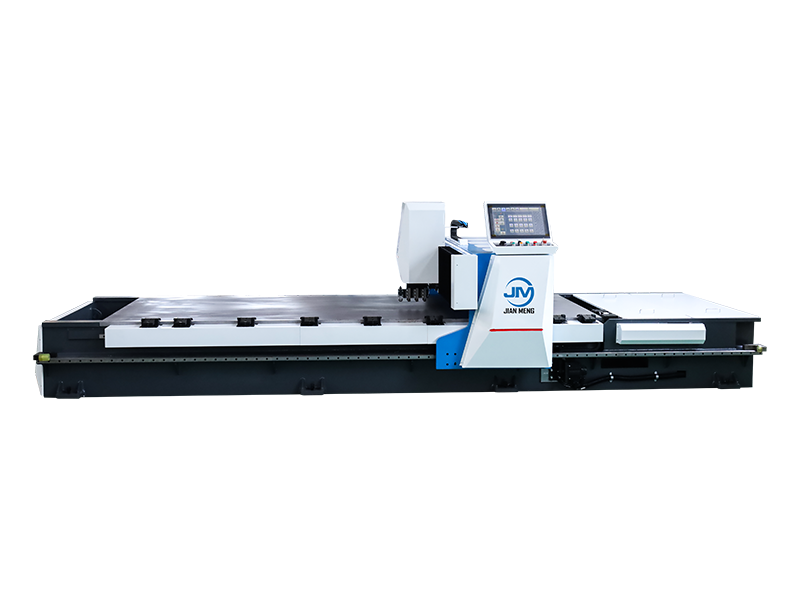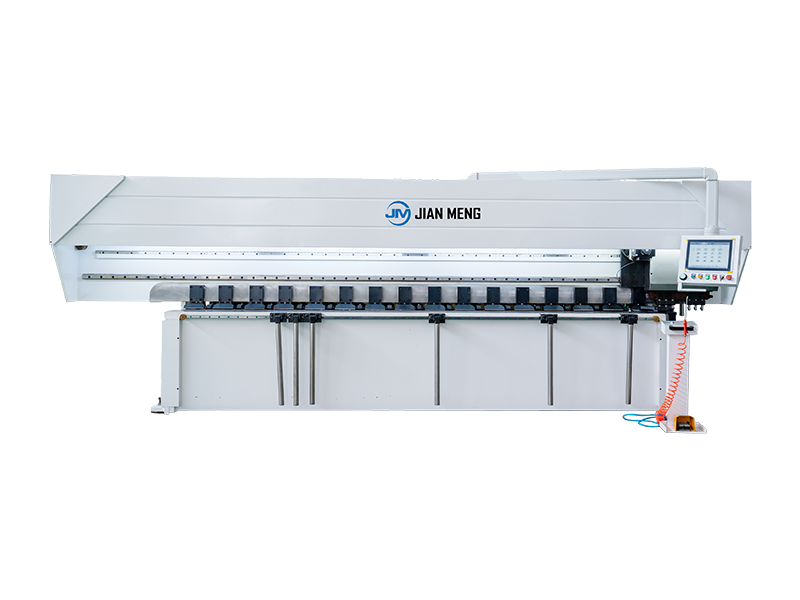Vacuum forming machines are versatile thermoforming tools that shape thermoplastic sheets into precise, repeatable forms by leveraging heat and vacuum pressure. Unlike injection molding (high-cost, high-volume) or 3D printing (low-speed, small parts), vacuum forming balances affordability, speed, and scalability—making it indispensable across industries from packaging to aerospace. This guide details the core capabilities, industrial applications, material compatibility, and integration with complementary manufacturing processes (e.g., metal forming) to help you maximize the value of a vacuum forming machine.
Before exploring applications, it’s critical to understand the machine’s operational framework—this explains its strengths (e.g., rapid prototyping) and limitations (e.g., deep-draw constraints). The vacuum forming process follows four sequential steps:
1. Sheet Clamping: A thermoplastic sheet (typically 0.1–6 mm thick) is secured in a pneumatic or mechanical frame to prevent movement during heating.
2. Thermal Softening: The clamped sheet is heated via infrared heaters, convection ovens, or quartz lamps to its glass transition temperature (Tg)—the point where the plastic becomes pliable but retains structural integrity (e.g., 80–120°C for PET, 150–180°C for ABS).
3. Vacuum Molding: The softened sheet is lowered over a mold (male = convex, female = concave, or combination). A vacuum pump evacuates air from the gap between the sheet and mold (typically -0.8 to -0.95 bar), pulling the plastic tightly against the mold’s surface to replicate its geometry.
4. Cooling & Demolding: The formed part is cooled via forced air, water-cooled molds, or ambient air until it solidifies. The mold is then retracted, and the part is trimmed (manually or via CNC routers) to its final dimensions.
Key advantages driving its adoption:
- Low Tooling Costs: Molds (often aluminum, wood, or 3D-printed resin) cost 50–90% less than injection molding dies, ideal for prototyping or low-to-medium production runs (10–100,000 parts).
- Rapid Cycle Times: 1–5 minutes per part (vs. 10–30 minutes for 3D printing), enabling fast iteration.
- Material Versatility: Works with all thermoplastics (e.g., PET, ABS, PVC, polycarbonate) and even composite sheets (e.g., fiberglass-reinforced plastic, FRP).
2. Industrial Applications & Capabilities
Vacuum forming machines excel at producing parts with shallow-to-moderate depth (max draw ratio ~4:1, depending on material) and uniform wall thickness. Below are their most impactful use cases, organized by industry:
2.1 Packaging Industry
The largest application for vacuum forming, accounting for ~40% of global usage. Machines create custom-fit packaging that protects products while enhancing shelf appeal:
- Blister Packs: Transparent PET or PVC blisters that enclose small consumer goods (e.g., electronics, toys, pharmaceuticals). The vacuum-sealed design keeps products sterile and tamper-proof.
- Clamshell Packaging: Rigid PP or HIPS (high-impact polystyrene) containers for tools, hardware, or food. Vacuum forming ensures tight seals to prevent contamination and extend shelf life.
- Food Trays: Heat-resistant PET or PP trays for ready-to-eat meals, produce, or deli items. Machines can integrate in-mold labeling (IML) to print branding directly onto the tray during forming.
- Medical Packaging: Sterile PETG (glycol-modified PET) trays for surgical instruments or diagnostic kits. Vacuum forming’s ability to create smooth, crevice-free surfaces complies with FDA and ISO 13485 standards.
Key Benefit: Low tooling costs allow brands to create seasonal or limited-edition packaging without upfront investment.
2.2 Aerospace & Automotive
In these sectors, vacuum forming produces lightweight, high-performance components that complement metal parts (e.g., aluminum, titanium):
- Aerospace Interiors:
- Cabin panels (ABS or polycarbonate) with integrated texture for grip and aesthetics.
- Seat backs and overhead storage bins (FRP-reinforced thermoplastics) that meet flame, smoke, and toxicity (FST) standards (e.g., FAR 25.853).
- Prototypes of engine components (e.g., ductwork) for wind tunnel testing—faster and cheaper than metal prototyping.
- Automotive:
- Interior trim (e.g., door panels, dashboard inserts) made from PVC or TPO (thermoplastic olefin) for durability and stain resistance.
- Under-hood components (e.g., battery housings, fluid reservoirs) using heat-resistant nylon or polypropylene.
- Aftermarket parts (e.g., spoilers, body kits) for custom vehicles—small shops can produce low-volume runs profitably.
Key Benefit: Thermoplastic parts reduce vehicle/aircraft weight by 20–30% vs. metal equivalents, improving fuel efficiency or payload capacity.
2.3 Medical & Healthcare
Vacuum forming’s ability to create sterile, precision parts makes it critical for medical device manufacturing:
- Diagnostic Equipment Housings: Polycarbonate enclosures for ultrasound probes, blood analyzers, or MRI accessories—transparent options enable visual inspection of internal components.
- Patient Care Products:
- Orthopedic braces (thermoplastic polyurethane, TPU) that are lightweight and conform to body contours.
- Bedpan liners and specimen containers (HDPE, high-density polyethylene) that are disposable and chemical-resistant.
- Labware: Custom trays for pipettes, microscopes, or test tubes—vacuum forming ensures consistent fit for automated lab systems.
Key Compliance Note: Machines used for medical applications require stainless steel frames (to resist corrosion) and HEPA-filtered vacuum systems (to prevent particulate contamination).
2.4 Hobbyist & Small-Business Use Cases
Vacuum forming machines (benchtop models, $500–$5,000) democratize manufacturing for entrepreneurs and makers:
- Prototyping: Rapidly test product designs (e.g., consumer electronics casings, toy parts) using 3D-printed molds—iterate in days instead of weeks.
- Model Making: Create detailed architectural models (e.g., building facades, furniture) or scale replicas (e.g., automotive/aircraft kits) using thin polystyrene sheets.
- Custom Merchandise: Produce branded items like display stands, keychains, or promotional giveaways (e.g., logo-embossed phone cases).
- Educational Projects: Teach manufacturing principles in STEM programs—students can design, mold, and trim parts to understand thermoplastic behavior.
2.5 Industrial & Commercial Components
Beyond consumer goods, vacuum forming supports heavy-industry needs:
- Material Handling: Pallet liners, tote bins, and conveyor guards (HDPE or polypropylene) that resist impact and chemical spills.
- Display Fixtures: Retail shelving, point-of-purchase (POP) displays, and museum exhibit cases (acrylic or PETG) for durability and clarity.
- Electronics Enclosures: Waterproof housings for outdoor sensors, LED lighting, or industrial controls (PVC or polycarbonate) that meet IP67/IP68 standards.
3. Material Compatibility
The versatility of vacuum forming stems from its ability to process all thermoplastics—each material is chosen for its mechanical, thermal, or chemical properties. Below is a breakdown of common materials and their ideal applications:
| Material | Key Properties | Vacuum Forming Suitability | Ideal Applications |
|----------------|-------------------------------------------------|-----------------------------------------------------|-----------------------------------------------------|
| PET (Polyethylene Terephthalate) | High clarity, good stiffness, recyclable | Excellent (shallow to moderate draws) | Blister packs, food trays, transparent packaging |
| ABS (Acrylonitrile Butadiene Styrene) | High impact resistance, easy to paint/print | Excellent (deep draws, complex geometries) | Automotive interiors, electronics housings, toys |
| PVC (Polyvinyl Chloride) | Chemical resistance, flame retardant | Good (avoid high heat—releases HCl) | Medical trays, pipe fittings, signage |
| Polycarbonate | High heat resistance, shatterproof, transparent | Good (requires higher heating temps) | Aerospace panels, safety goggles, LED housings |
| PP (Polypropylene) | Chemical resistance, low density | Good (flexible, requires controlled cooling) | Food containers, battery housings, labware |
| FRP (Fiberglass-Reinforced Plastic) | High strength-to-weight ratio, corrosion-resistant | Moderate (reinforcement limits deep draws) | Aerospace structural parts, marine components |
4. Integration with Metal Forming & Complementary Processes
Vacuum forming is rarely used in isolation—its greatest value often lies in combining with other manufacturing techniques (e.g., metal forming, CNC machining) to create hybrid assemblies. Key integrations include:
4.1 Vacuum Forming + Metal Forming
In aerospace and automotive, plastic and metal components work in tandem to balance weight and strength:
- Aerospace Skins: Vacuum-formed polycarbonate panels are bonded to aluminum or titanium frames—plastic reduces weight, while metal provides structural support.
- Automotive Chassis: Vacuum-formed plastic ductwork (for HVAC or engine cooling) is attached to stamped steel brackets—plastic’s flexibility simplifies installation, while metal resists vibration.
- Electronics Enclosures: Vacuum-formed ABS housings are fitted with metal inserts (e.g., threaded nuts, heat sinks) via insert molding (a variation of vacuum forming where metal parts are pre-placed in the mold).
Technical Note: Adhesives or mechanical fasteners (e.g., rivets) must be compatible with both materials—for example, epoxy adhesives work for ABS-aluminum bonds, while silicone adhesives suit temperature-sensitive plastics.
4.2 Vacuum Forming + CNC Machining
CNC routers or lasers trim vacuum-formed parts to precise tolerances (±0.1 mm) and add features like holes, slots, or threads:
- Medical Devices: A vacuum-formed PETG tray is CNC-trimmed to fit surgical instruments, then laser-drilled for fluid drainage.
- Aerospace Ductwork: A vacuum-formed FRP duct is CNC-machined to match the diameter of metal pipes, ensuring airtight connections.
4.3 Vacuum Forming + 3D Printing
3D printing creates low-cost, rapid prototypes of molds for vacuum forming—ideal for small-batch testing:
- Product Design: A 3D-printed resin mold (e.g., PLA or resin) is used to vacuum-form 10–50 prototype casings for a new smartphone accessory.
- Custom Molds: For one-off projects (e.g., museum replicas), 3D printing eliminates the need for expensive aluminum molds.
5. Selecting the Right Vacuum Forming Machine for Your Needs
To maximize utility, match the machine’s specifications to your application. Key factors to evaluate:
| Factor | Considerations |
|----------------------|--------------------------------------------------------------------------------|
| Sheet Size Capacity | Benchtop machines (12”x12” to 24”x24”) for small parts; industrial machines (48”x48” to 96”x96”) for large panels (e.g., aerospace interiors). |
| Heating System | Infrared heaters (fast, uniform heating for thin sheets); convection ovens (better for thick or high-temperature plastics like polycarbonate). |
| Vacuum Power | Pumps with flow rates of 5–20 CFM (cubic feet per minute) for shallow draws; 20–50 CFM for deep draws (>3” depth). |
| Automation Level | Manual machines (affordable for hobbyists); semi-automatic (automatic clamping/heating, manual demolding) for small businesses; fully automatic (integrated loading/trimming) for high-volume production. |
| Mold Compatibility | Ensure the machine accommodates your mold type (male/female, 3D-printed/aluminum) and height (typically 2–12” for benchtop models). |


 English
English  中文
中文  Arabic
Arabic  Russian
Russian  Spanish
Spanish  Portuguese
Portuguese  French
French  German
German  Hindi
Hindi  Thai
Thai  Vietnamese
Vietnamese  Khmer
Khmer  Italian
Italian  Turkish
Turkish  Korean
Korean  Belarusian
Belarusian 

